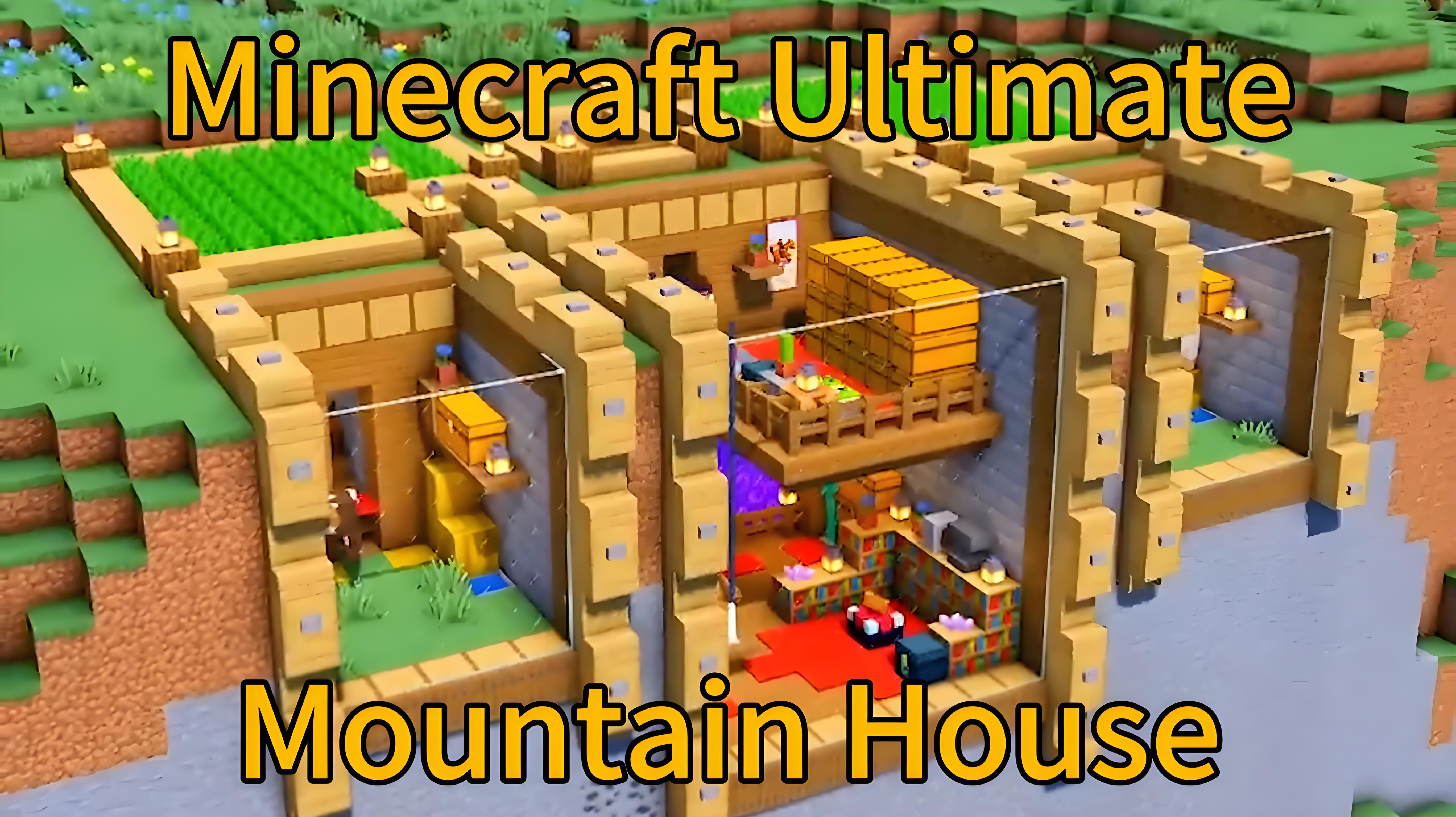Minecraft has always been about creativity and self-expression through building. While placing blocks might seem simple at first glance, there's an art to creating structures that are both functional and aesthetically pleasing. In this guide, we've compiled the top 10 building techniques that can transform your Minecraft constructions from basic boxes to architectural masterpieces.
Whether you're a seasoned builder looking to refine your skills or a newcomer wanting to improve your creations, these techniques offer something valuable for players at every level. From structural planning to decorative details, our list covers essential methods that will elevate your building game.
Foundation Techniques for Better Buildings
Let's start with fundamental techniques that form the basis of any good Minecraft construction.
1. Depth and Texture
One of the most common mistakes new builders make is creating flat, single-material walls. Adding depth to your builds instantly improves their appearance and makes structures feel more three-dimensional.

The simplest way to add depth is to use a combination of blocks that work well together and build your walls multiple blocks deep. For instance, instead of a flat stone wall, try setting stone bricks as the main wall material, with cobblestone walls or fence posts extending outward for support columns. Use stairs and slabs to create recessed areas, and incorporate occasional accent blocks like polished andesite or mossy stone bricks for texture.
2. Scale and Proportion
Understanding proper scale will dramatically improve your builds. A common error is making structures too small, leaving interiors cramped and limiting decoration options.
As a general rule, make rooms at least 5x5 blocks with 3-4 block-high ceilings for regular interiors. For grand halls or public spaces, consider 7+ block-high ceilings. Remember to scale your windows, doors, and decorative elements proportionally to the size of your building. A massive castle deserves large, dramatic windows and entrances, while a cozy cottage looks better with smaller, appropriately-scaled features.
Structural Techniques That Elevate Your Builds
Once you've mastered the basics, these structural techniques will help your buildings stand out with interesting shapes and solid architecture.
3. Framework Construction
Building a solid framework first gives your structures better definition and more interesting silhouettes. This technique involves creating an outline or skeleton of your building before filling in the walls.

Start by using logs, deepslate, or other contrasting blocks to create vertical supports at the corners and at regular intervals along walls. Connect these with horizontal beams to define floor levels and the roofline. This technique not only provides visual interest through contrast but also helps guide your building process, making larger projects more manageable.
4. Diagonal Building
Breaking away from the blocky, right-angled nature of Minecraft can make your builds truly stand out. Diagonal building is challenging but incredibly rewarding for creating more organic and interesting structures.
To build diagonally, start with a clear plan or outline. Remember that diagonal lines in Minecraft follow a 1:1 ratio (one block over, one block up). Use stairs and slabs strategically to smooth corners and transitions. For diagonal walls, alternating solid blocks can create a zigzag pattern that, from a distance, appears as a smooth diagonal. This technique works particularly well for towers, windmills, and custom roofing.
5. Roof Variations
Roofs often make or break a building's appearance. Moving beyond flat roofs to more complex designs instantly elevates your construction.
The roof is the crown of your building. Taking time to craft an interesting roofline transforms a simple structure into an architectural statement.
Gabled roofs (A-frame) are simple to build and effective. Start with stairs along the edge, working upward in a triangular shape. For more complex designs, try gambrel roofs (barn-style with a shallow upper slope and steeper lower slope), hip roofs (sloped on all sides), or mansard roofs (four-sided with a double slope on each side). Mixing roof styles or adding features like dormers or chimneys adds character to larger buildings.
Detail Techniques That Bring Builds to Life
Details transform good builds into great ones. These techniques focus on adding character and realism to your structures.
6. Custom Furniture Design
Vanilla Minecraft offers few furniture options, but creative block combinations can produce beautiful custom furniture that enhances any interior.

For tables, try placing fence posts or iron bars with a pressure plate, carpet, or trapdoor on top. Create chairs using stairs with signs, trapdoors, or fence posts as armrests. Bookshelves can be enhanced with item frames containing books, while barrels and smokers make excellent kitchen appliances. Remember that armor stands, banners, and flower pots are invaluable for adding small decorative touches to furniture arrangements.
7. Landscaping and Terrain Integration
A beautifully designed building can still look out of place if it doesn't integrate well with its surroundings. Thoughtful landscaping connects your structure to the environment.
Begin by adapting your building to the existing terrain rather than flattening everything. Use paths made from different materials (gravel, coarse dirt, path blocks) to create natural approaches to your structures. Incorporate custom trees, gardens, ponds, and rock formations around your building. For immersion, extend your design style to nearby terrain features – if your house has wooden supports, perhaps nearby hills could have the same wood used for retaining walls or mine entrances.
Advanced Techniques for Masterful Builders
These sophisticated techniques require more practice but yield impressive results for those willing to master them.
8. Block Mixing and Gradients
Instead of uniform materials, using carefully selected block combinations and gradients creates depth, texture, and visual interest that single-block constructions can't match.
For stonework, mix stone bricks with cracked and mossy variants, cobblestone, andesite, and tuff to create realistic, weathered walls. When building wooden structures, combine different wood types in a deliberate pattern, or create a gradient from light to dark woods. For large walls or floors, introduce gradient transitions – for example, a path that gradually shifts from stone to gravel to dirt as it extends from a castle into a forest.
9. Forced Perspective
Forced perspective is a technique that uses optical illusions to make buildings appear larger or more detailed than they actually are. This is particularly useful for creating grand-looking structures on servers with limited space.

To create forced perspective, build the front of your structure at full scale, then gradually reduce the scale as the building extends backward. For example, a castle might have full-sized gates and front towers, but structures further back would be built at 3/4 or 1/2 scale. This technique also works well for creating the illusion of detailed interiors when viewed through windows or doorways.
10. Organic Building
Perhaps the most challenging technique to master, organic building moves away from the blocky constraints of Minecraft to create flowing, natural forms like giant trees, creatures, or fantasy elements.
Successful organic building starts with understanding basic shapes and practicing with simple curves. Use reference images or create wireframe outlines before filling in details. For smoothness in larger organic builds, the gradual stepping of blocks is crucial – each row should only extend outward by one block at most. This technique is particularly impressive for fantasy builds like dragons, giant trees, or natural wonders like waterfalls and rock formations.
Conclusion
Building in Minecraft is a journey of continuous improvement. The techniques we've highlighted represent the fundamental approaches that most master builders incorporate into their creations. Remember that the best way to improve is through practice and experimentation – don't be afraid to try new methods and develop your own unique style.
Start by incorporating one or two of these techniques into your next project, then gradually add more as you become comfortable. Take screenshots of your progress over time, and you'll be amazed at how quickly your building skills improve. What are your favorite building techniques? Have we missed any essential methods that you think deserve recognition? Let us know in the comments!
